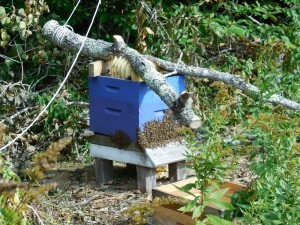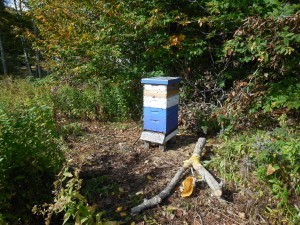Lea Wait's Blog, page 308
October 19, 2014
How to Start a Cut-Your-Own Christmas Tree Farm
Kaitlyn Dunnett here, eight days before the publication date of Ho-Ho-Homicide, the 8th Liss MacCrimmon Scottish-American Heritage mystery and my fiftieth traditionally published book. In honor of the occasion, I’m giving away an autographed copy to one person, randomly selected, who comments on this post. The winner’s name will appear in the next Weekend Update.
Why am I writing about Christmas tree farms? Well, aside from the fact that I live on one, that’s the setting for Ho-Ho-Homicide, in which Liss solves a series of crimes while helping a young woman start a cut-your-own Christmas tree business. Since Liss is a champion list-maker, I thought I’d share this one.
Step One: plant trees
Step Two: wait ten years, occasionally pruning (and planting more trees each year if you want to continue in business more than one)
Step Three: buy netter, tarps, and saws (Why, yes, a body will fit through the netter!)
Step Four: buy liability insurance
Step Five: get PayPal or cube attachment for iPad or other device
Step Six: buy sales pads and print sales-tax calculator
Step Seven: advertise with ads, signs along the roadside and in local businesses, and word of mouth
Step Eight: offer incentives to buy a tree—free hot chocolate and candy canes (or maybe a free book by a famous local author to the first twenty customers—got to make use of those author copies somehow!)
Step Nine: set business hours (days and times) and make them clear on a large sign on the premises
Step Ten: cross your fingers and hope that people still want their kids to experience cutting down their own tree and don’t just make do with that artificial pink one stored in the attic
October 17, 2014
Weekend Update: October 18-19, 2014
 Next week at Maine Crime Writers there will be posts by Kaitlyn Dunnett (Monday), Vicki Doudera (Tuesday), Al Lamanda (Wednesday), Lea Wait (Thursday), and Barbara Ross (Friday).
Next week at Maine Crime Writers there will be posts by Kaitlyn Dunnett (Monday), Vicki Doudera (Tuesday), Al Lamanda (Wednesday), Lea Wait (Thursday), and Barbara Ross (Friday).
In the news department, here’s what’s happening with some of us who blog regularly at Maine Crime Writers:
Barb Ross: If there are any librarians out there who are going, I’ll be at the New England Library Association conference this Monday from 3:30 to 4:30 in Boxborough. MA. My publisher has supplied copies of Clammed Up to give away. I’d love to see you there.
Then on Saturday, October 25, 2014, I’ll be at the Boston Book Festival. I’ll appear on the panel “The Whydunnit in Crime Fiction,” at 10:00 a.m., First Church Chapel, Berkeley & Marlborough Street with Sheila Connolly, Ray Daniel, Arlene Kay, Marian Lanouette, Edith Maxwell, Liz Mugavero, Leigh Perry, and Maine Crime Writers own Kate Flora, along with host Julie Hennrikus
Then I’ll be in the Sisters in Crime New England booth from 3:00 to 4:00 p.m., selling and signing books.
Lea Wait: Tuesday., October 21, at 7 p.m. I’ll be speaking at the Curtis Library in Brunswick, Maine as part of their Mystery Authors Series. I love visiting the Curtis Library, and will even “raffle off” an advance copy of Twisted Threads, which won’t be published until January.
Currently I’m booking school visits (talking about my historicals for ages 8 and up for grades 4-8, or my mysteries, and how to write them, for high school or college students) for the spring of 2015. For details about my visits, see my website, http://www.leawait.com
And — looking for a special book to read or give at Christmas time? The Library Journal has a great list of new books to choose from which includes work by Sharon McCrumb, Anne Perry, Donna Andrews, Fern Michaels, and my Shadows on a Maine Christmas and Kaitlyn Dunnett’s Ho-Ho Homicide. Check them all out at http://reviews.libraryjournal.com/2014/10/books/fiction/Christmas
 Kathy Lynn Emerson (aka Kaitlyn Dunnett): The podcast I recorded while at this year’s Malice Domestic is now up at Alfred Hitchcock Mystery Magazine‘s website. Here’s the link to listen to 45 minutes or so of me reading “The Kenduskeag Killer” (set in Bangor Maine in 1888): http://ahmm.podomatic.com/entry/2014-10-17T08_13_18-07_00 Enjoy.
Kathy Lynn Emerson (aka Kaitlyn Dunnett): The podcast I recorded while at this year’s Malice Domestic is now up at Alfred Hitchcock Mystery Magazine‘s website. Here’s the link to listen to 45 minutes or so of me reading “The Kenduskeag Killer” (set in Bangor Maine in 1888): http://ahmm.podomatic.com/entry/2014-10-17T08_13_18-07_00 Enjoy.
P.S. The artwork shown here went with the original story in the April 2005 issue of the magazine.
An invitation to readers of this blog: Do you have news relating to Maine, Crime, or Writing? We’d love to hear from you. Just comment below to share. Don’t forget that comments are entered for a chance to win our wonderful basket of books and the very special moose and lobster cookie cutters.
And a reminder: If your library, school, or organization is looking for a speaker, we are often available to talk about the writing process, research, where we get our ideas, and other mysteries of the business. Contact Kate Flora: mail to: kateflora@gmail.com
October 16, 2014
The Pleasure Of Your Company
Kate Flora here, reporting in from the road. October is shaping up to be a totally crazy month. In an  effort to get out there and promote my new books, I’ve scheduled a lot of events. Like me, half of them are in Maine, the other half in Massachusetts. I’ve gotten to the point where when people ask where I live, I respond, “In my car.”
effort to get out there and promote my new books, I’ve scheduled a lot of events. Like me, half of them are in Maine, the other half in Massachusetts. I’ve gotten to the point where when people ask where I live, I respond, “In my car.”
All of this is complicated by the fact that I just had surgery on my leg, and according to the “powers that be” I am supposed to stay still and keep it elevated. Not easy to do when I’m in fine bookstores and libraries everywhere. When I’m home, my already awful typing is made considerably worse by having to type while lying on my back with my leg propped up on a heap of pillows. I offer this as an apology to anyone who has recently read anything I’ve written. Between the letters worn off half my laptop keys and balancing all of this on my belly, I am NOT communicating as effectively as I’d like.
But….

With the amazing Carol Briggs at the Curtis Library
But I am having a very good time. Some of the events, like this past Tuesday night at the Curtis Library in Brunswick http://www.curtislibrary.com, have been solo events. This was a return trip to Curtis, where the amazing Carol Briggs puts a fabulous mystery writers series together every autumn. There is an audience. A TV camera, and cookies to die for. And I get a chance to talk at length about the writing process and what it’s like to launch a true story after working on it for five years. Book talks at Curtis are always like being in a room full of friends. I come away feeling like it has been a conversation.
But…
Some of the best times are when I get to do events with other writers. Around 1993, at the urging of a woman I met at a conference, I joined an organization called Sisters in Crime. It was a decision which has enhanced my life for more than two decades. In New England, we have a very strong chapter, and one of the things our chapter does best is run a Speakers’ Bureau http://www.sincne.org, sending panels of authors to speak at libraries and organizations throughout New England. Okay. So when I call this post ‘The Pleasure of Your Company’ I am speaking about both sides of the table. There are the amazing readers whocome to libraries to hear writers talk about what we do. And there are my sister writers on the speakers’ side of the table who share their stories.

The prolific Sheila Connolly
This means that even as I’m in a library trying to sell an audience–you–on my new books, I am also getting to hear about the perspectives, stories, and research of other writers. And I am just as fascinated as anyone in the audience.
Last week I was in Wakefield, Massachusetts with Arlene Kaye http://arlenekay.com, who writes romantic suspense,

The glamorous Arlene Kaye in Wilmington
Coralie Jensen http://coraliehjensen.com, who writes historicals and lovely mysteries set in Italy, and Clea Simon, who writes cozies with a touch of the supernatural. We do the same thing, and we do it very differently, and the conversation was rich as a result. Last night I was at a marvelously funky and generous bookstore called the New England Mobile Book Fair http://www.nebookfair.com, in Newton, Massachusetts with two writers so prolific they scare me. Sheila Connolly http://sheilaconnolly.com currently writes three mystery series, one involving an apple orchard, one museums in Phildelphia, and a third set in Ireland, and she does at least one book in each series a year (and that doesn’t count the paranormal e–books). Clea Simon http://cleasimon.com writes two series, both with cats and both with a touch of the paranormal, and about a book and a half in each series per year. It’s a prodigious output, and yet they are calm and poised and delightful. And I tell them it took me five years to write Death Dealer.
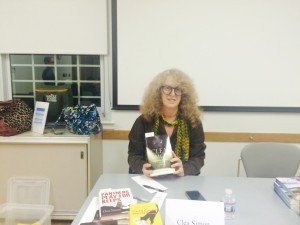
Clea Simon moderates our panel in Wilmington
So. I am not done. I will be at bookstores in Maine and Massachusetts again next week. And the week after. And then there is a brief vacation on the horizon, and on to the New England Crime Bake. Planning for next year’s Maine Crime Wave has begun.
Crazy? Perhaps. But when you write books with colleagues who are this congenial, when you get to visit libraries and bookstores this welcoming, and when you get to speak to readers who genuinely care about authors and writing, what could be better.
Perhaps I’ll have the pleasure of your company at an upcoming event? The Concord Festival of Authors? Longfellow Books? Check my website to see where I’ll be next.
p.s. Aren’t you curious about the stuffed German Shepherd?
October 15, 2014
Wits’ End
 The title of this post illustrates one of the things I like most about writing. Predictably for a kid who was taught to write by the nuns, using that soft paper with three lines on it (two solid ones and a dotted one inbetween, remember?) and a soft-leaded very dark-black pencil, the fat kind that is better graspable by a small hand…
The title of this post illustrates one of the things I like most about writing. Predictably for a kid who was taught to write by the nuns, using that soft paper with three lines on it (two solid ones and a dotted one inbetween, remember?) and a soft-leaded very dark-black pencil, the fat kind that is better graspable by a small hand…
Well, that was a little blast from the past, wasn’t it? Did you learn to write that way, too? But as I was saying: That’s right, it has to do with punctuation.
Because the thing is, if I’d said wit’s end instead of wits’ end it would imply that I’ve run out, or perhaps even that everyone had. Which is another subject that I could go on about, but…
Anyway, it’s the apostrophe placed just that one little space farther to the right that gets me. It makes all the difference in meaning and in implication too, sometimes. I like it so much that even when I’m in the throes of the dreaded book-middle (which yes I am, thanks for asking), that apostrophe can delight me.
all the difference in meaning and in implication too, sometimes. I like it so much that even when I’m in the throes of the dreaded book-middle (which yes I am, thanks for asking), that apostrophe can delight me.
It’s a delight with its roots (not it’s!) in a strict rule, yet the pleasure it brings is the kind that’s outside rules, a child’s stubborn “I like it because I like it.” Possibly if I were a painter there’d be something about paint, or brushes, or canvas that would cheer me so much. Musicians no doubt have favorite musical whatever-they-ares, meaningful only to others similarly involved.
Meanwhile I’ve got apostrophes, and spelling, and grammar doo-dads (the subjunctive! and someday let me tell you about the etymology of the word ‘gee-gaw’) to love. The little twist you can give to a sentence, implying something about the mood or someone’s motives, by the choices you make writing it — I certainly don’t always succeed at this, but the knowledge that it’s at least possible by using language is intoxicating.
Language, after all. What an astonishing thing. We make shapes with our mouths and force air through our vocal cords to create sounds that have…meaning? Who thought that up? And we make marks that stand for the sounds (that right there being all its own wonderment) and they have meaning?
 And then we write…stories? I mean to say, I am seriously impressed with us sometimes for coming up with all of it. That’s why even in the middle of writing a novel, when there are moments of being at wits’ end, for sure, I don’t have to worry about the end of wit. I may not have much of it on tap today, and it might run slow tomorrow, but I still have a hope of it coming on strong the day after and anyway, someone will have some. There won’t be a wit’s end…
And then we write…stories? I mean to say, I am seriously impressed with us sometimes for coming up with all of it. That’s why even in the middle of writing a novel, when there are moments of being at wits’ end, for sure, I don’t have to worry about the end of wit. I may not have much of it on tap today, and it might run slow tomorrow, but I still have a hope of it coming on strong the day after and anyway, someone will have some. There won’t be a wit’s end…
As long as no one misplaces all the apostrophes.
(Note: I’m racing toward deadline so this is a blast from the past. Back to real blogging – with real pictures – next time!)
October 14, 2014
A bit of Nostalgia
I wrote this many years ago. Last week, wandering around the edge of the family berry patch got me remembering it.
Blueberry Summers
Beth waited while I looked around the new room, hunting for the Shedd’s peanut butter pail. The room and the pail are both nearly fifty years old, but names, like memories don’t fade easily. When we reached the blueberry field, I paused. “Expect to see a deer.” After dropping the first few berries from a height sufficient to create the time honored ‘plink—plank—plunk,’ we smiled at each other, sharing separate, but still entwined memories of Robert McClosky’s Blueberries For Sal.
Ten minutes later I looked up from picking and saw a golden shape ambling along the back edge of the field. We watched the doe for nearly half an hour. She was enjoying the harvest as much as we were until something we couldn’t see made her uneasy and she bounded off towards the swamp.
Driving back to Hartland I reflected on how many of my early summers involved blueberries. My mother used to lead the three of us across the road, past the big hen house and into the front blueberry field. We were all younger than ten and Mom could count on the bright blue berries to hold our interest while she picked enough for a pie and perhaps a batch of jam. We kids usually ate far more than we contributed to this family harvest and hands and faces took on a blue pallor. It may well have been here in the field where I performed my famous surprise guest appearance; grinning while sticking out my tongue and freeing the cricket I had been hiding in my mouth.
A couple years later, I was helping Dad burn the back berry field when a sudden windstorm took the placid flames and whipped them into the nearby pines, creating a crown fire that is as vivid today as it was almost half a century ago. It taught me more effectively than any TV lecture by Smoky the Bear, to respect fire in the open. Oddly enough, we never did get around to getting that field into production.
When I was eleven, I hired on as a blueberry raker for Gushie Farms in Appleton. The first field we raked was at the head of Sennebec Pond and the cool breeze off the water filled us with a false sense of optimism. By the end of the first day, I was convinced I might never stand upright again. While I didn’t get rich that summer, it was the first time people treated me as something other than a child; not quite an adult, but still, it made me feel valued. By the time we finished the last field and school was about to start again, I had gone well beyond blisters and backaches, having learned the technique of resting one elbow on my knee while running the tines lightly under the berries and lifting them loose. I was also about as dark as a white kid can get.
That fall, I made a bit more spending money by helping prepare blueberry fields for their biennial burning after school and on weekends. This was well before the roaring monsters that can be heard several miles away came into use. We broke open bale after bale of musty hay and spread it over the stripped vines. The following spring, we went back on cool damp evenings and under the weight of Indian Pumps, watched as the crew leader walked around the perimeter, dragging a length of kerosene-filled galvanized pipe with a wick in one end. As soon as the fire line started into the field, we would pump vigorously and extinguish the unwanted line of flames.
Those were surprisingly peaceful evenings, leaving us plenty of time to chat or think quietly as the fire crept towards the center of the field and died. I always came home sooty and reeking of smoke, but these were small prices to pay for this ritual of passage.
I raked blueberries for several years, never getting particularly skillful at it, but earning enough to buy my school clothes and supplies every fall. Along the way, I discovered the itchy and painful bite of brown field spiders and that not all hornets nest in trees. I even watched, bemused as a dozen teenagers ran whooping and hollering after a curious bear that had followed our truck down a woods road from a remote blueberry field.
I even tried to spark a summer romance, but was cut dead by a girl who was in my high school class. She preferred a guy from Erskine Academy who was also on the crew. That relationship still flourishes more than 40 years later. When I wrote Hither we Go, the second book about the Wizard of Simonton Pond, I used a lot of the experiences during those raking seasons as plot and setting for the beginning of the book, even to including a fairly unpleasant older gentleman now deceased. He made a practice of cutting into my raking path whenever the berries were particularly plentiful. Back then, all I could do was grit my teeth. I got my revenge as a writer.
I wasn’t the only family member who was intimately involved with blueberries. Mom experimented with hundreds of different blueberry recipes and wrote about many of them for magazines like Farm Journal. Her fame was such that she was asked to set up the first Maine Blueberry Festival at the Union Fair. Sister Kate ran for Blueberry Queen one year and my late sister Sara was still proudly raking berries in her early forties. I even designed one of the t-shirts for the blueberry festival, a trumpet spraying berries over the caption “It was a great year for the blues.”
Halfway through high school, I switched from raking to working in the processing plant a mile north of the family farm. The work was no less strenuous. Instead of bending in the burning sun all day, I unloaded box after box of winnowed berries and wheeled them on pallets to a huge device that blew even more stems and leaves from the fruit before plunging the berries in a chlorinated water bath. From there, a series of conveyer belts carried them past eagle-eyed women who snatched the remaining stems and green berries from the belts before the blueberries fell into yet another box.
Since we were classed as agricultural workers, overtime wasn’t an option and when the harvest was in full swing, we often started at seven am and found ourselves wiping down the equipment with a strong bleach solution at 1 am the following morning. For the three or so weeks the plant was in operation, life revolved around berries and more berries. My world shrunk to include the plant, my co-workers and the ride to and from the plant. When Sunday rolled around, I barely had energy enough to do more than read and eat.
Because the work environment was so intense for such a short period of time, my memories from those summers nearly 40 years ago are still vivid. There were two girls from Montville who worked on the berry line. Both were attractive, but the younger was more outgoing and we would joke as I passed with laden pallets. Somehow, she gave me the nickname ‘green berry’ and in a moment of teen bravado, I took out the box of magic markers and drew a large green circle on a t-shirt and wrote “The Green Berry Rides Again” underneath. The following morning, I nearly chickened out, but donned it at the last minute before going to work.
Her grandfather, a foxy old Mainer, also worked at the plant. He once put in for 25 hours in the same day. When the owner asked him how this was possible, he said with a perfectly straight face. “Well, I never took my lunch hour.”
There were other intangible blueberry moments that helped define my growing up. I was allowed to drive a dump truck to Cherryfield one Saturday. It was my first experience with anything bigger than my Oldsmobile and I can remember the fun of learning how to shift the dual-speed rear axle as I crested and then descended the hills between Bucksport and Ellsworth. On several other occasions I rode shotgun with a taciturn fellow as we took clean berries to the blast freezer in Portland. We shared his thermos of coffee and while he said little, the comfortable silence said that I was accepted as an equal.
The summer after I graduated from high school, I helped clear a thick area of swampy scrub on Appleton Ridge to create an irrigation pond for the berry fields. There were days that July when no sane person would have run power equipment, but we bulled along and the following year, you could drive by and admire our handiwork.
I went off to school in Arizona that fall and my career as a blueberry person ended, but the memories remained. Even now, as soon as I pick up the family blueberry rake, I automatically assume the position; back bent, elbow on the knee as I guide the tines under the blue clusters. The mind pictures return as well and I smile.
October 12, 2014
A MAINE BEE ADVENTURE
Susan Vaughan here. Yes, it’s Columbus Day! Thank you, Chris, for “discovering” this New World. But I’ll leave the celebration to others.
Today I want to share an extraordinary experience. I’ve promised not to name the location and identities to protect privacy, and I hope commenters who recognize this series of events will keep that in mind. This a tale of neighborly and family support and caring by expert volunteers.
Most warm days I walk my dog Sasha on a path mowed around my neighbor “A” ’s field. In mid-September I noticed a hanging “growth” on a tree limb that I at first thought was a hornet nest.
Wrong. It was a bee colony. Honeybees, to be specific. I notified A about what I’d seen, and she and a couple of other neighbors investigated. A beekeeper friend of A’s came to study the colony (not hive). He suggested these weren’t “wild” bees but probably swarmed from a hive not too far away. Honeybees cannot survive in the wild in a state this far north. The bees would die, he said, by the second frost. This late in the season, an attempt to move a well established colony would distress them too much.
Oh no! We were all horrified. Honeybees are endangered, and we were just going to let these little pollinators die? But don’t despair. The “Bee Man” decided to give it a go. (Bee Man is my term, but I’ve learned that some beekeepers call themselves “beeks.”) If it didn’t work, at least we tried. The colony had settled on the south-facing side of the field, which he said was a very good “bee field,” with lots of wildflowers and no pesticide contamination. Moving the colony might work if the mild autumn weather held and if the bees could remain in that field, but in a hive.
Before I continue with the story, a few facts about bees. Different kinds of bees have different homes. Honeybees are the only bees that make honey and thus need a large “nest.” A “hive” is a human-made container for honeybees, with combs on frames inside the hive. In the wild, honeybees create a nest of pods with chambers for the queen, the workers, a nursery, and honey to get them all through winter. A colony can number as many as 60,000 honeybees.
The Bee Man brought a hive to the field, and a group of family and friends set to work. Slowly, gently, so as to disturb the bees as little as possible.
With ropes and help from many hands for leverage, he sawed off both sides of the branch.
The colony came down to the ground without incident until they moved the log into position on the hive. The bees and their honey were heavy, and three combs broke off and fell to the ground. Luckily, no stinging.
The next day, the bees removed the honey from the broken combs, which were only partly filled. While we waited for more of them to move inside and a larger hive box to arrive, the Bee Man placed the lid on top as rain protection.
Several days later when the larger hive section arrived, he carved off the rest of the wood and lowered the colony inside. A friend of his donated frames of honey and screens for comb support. Immediately the bees began to remodel their new, larger home and eat the new honey.
The Bee Man said these were the gentlest bees he’d ever seen, very calm and not bothered by the human activity. No one was stung in this entire process. Now our neighborhood honeybees have plenty of food until the cold.
A has a recipe for nectar to keep them fed during winter and has ordered protective gear. She’s a champ. Everyone feels the colony has a good chance of survival. In the meantime, things are humming.
*** I’ll gift a copy of PRIMAL OBSESSION (Print or digital in the U.S.; digital only elsewhere) to the first commenter who can tell me how/why honeycomb chambers are hexagonal. You can find more information about PRIMAL OBSESSION and my other books at www.susanvaughan.com.
October 10, 2014
Weekend Update: October 11-12, 2014
 Next week at Maine Crime Writers there will be posts by Susan Vaughan (Monday), John Clark (Tuesday), Jayne Hitchcock (Wednesday), Sarah Graves (Thursday), and Kate Flora (Friday).
Next week at Maine Crime Writers there will be posts by Susan Vaughan (Monday), John Clark (Tuesday), Jayne Hitchcock (Wednesday), Sarah Graves (Thursday), and Kate Flora (Friday).
In the news department, here’s what’s happening with some of us who blog regularly at Maine Crime Writers:
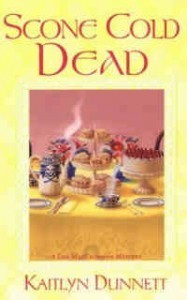 Kaitlyn Dunnett: Turns out the $1.99 special on Scone Cold Dead (2nd book in the Liss MacCrimmon series) that I mentioned last weekend will last until October 21st AND it’s at B&N for Nook as well as at Amazon for Kindle. This is one of those things, like titles and cover art, over which the author has no control, although I’m certainly in favor of lowering ebook prices. No one tells me much ahead of time, either, so I’m just passing on information as I get it. It does appear, though, that Kilt Dead, the first book in the series, has also dropped in price to $1.99. If you already have these two books, tell your cozy-reading friends. The prices will go back up before you know it.
Kaitlyn Dunnett: Turns out the $1.99 special on Scone Cold Dead (2nd book in the Liss MacCrimmon series) that I mentioned last weekend will last until October 21st AND it’s at B&N for Nook as well as at Amazon for Kindle. This is one of those things, like titles and cover art, over which the author has no control, although I’m certainly in favor of lowering ebook prices. No one tells me much ahead of time, either, so I’m just passing on information as I get it. It does appear, though, that Kilt Dead, the first book in the series, has also dropped in price to $1.99. If you already have these two books, tell your cozy-reading friends. The prices will go back up before you know it.
Barb Ross: Next Saturday, October 18, 2014, from 11:00 am to 1:00 pm, I’ll be featured at the Author Luncheon at South Freeport Congregational Church, 98 South Freeport Road
South Freeport ME 04078. I’d love to see you there. The cost is $15 per person. Reserve a ticket in advance by calling 207-865-4012; no tickets will be sold at the door.
Kate Flora: This coming Tuesday, I’ll be speaking about my new books at the Curtis Library in
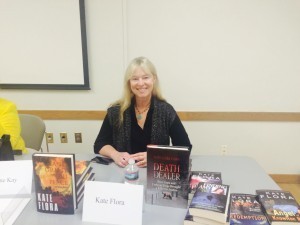
At the Wilmington, MA library with my two new babies
Brunswick at 7:00 pm. The Curtis mystery series is always a treat to attend and I’m looking forward to sharing my two new books with readers who’ve been hearing about them for a long time. As some of you know, I worked on Death Dealer for five years.
As special treat is that the publisher arranged to send me copies of my new Joe Burgess, And Grant You Peace, in advance of the publication date, so I’d have them for Tuesday. Hope I’ll see some of you there.
An invitation to readers of this blog: Do you have news relating to Maine, Crime, or Writing? We’d love to hear from you. Just comment below to share. Don’t forget that comments are entered for a chance to win our wonderful basket of books and the very special moose and lobster cookie cutters.
And a reminder: If your library, school, or organization is looking for a speaker, we are often available to talk about the writing process, research, where we get our ideas, and other mysteries of the business. Contact Kate Flora: mailto: kateflora@gmail.com
October 9, 2014
The Game’s Afoot!
Hi. Barb here, feeling nostalgic about mystery games.
 When I was a kid, my family wouldn’t play Clue with me. I always won. The story became family lore and got spun a couple of different ways. I always contended they wouldn’t play with me. My mother claimed I gave up playing with them because it was too easy. Either way, perhaps my future as a mystery writer was foretold.
When I was a kid, my family wouldn’t play Clue with me. I always won. The story became family lore and got spun a couple of different ways. I always contended they wouldn’t play with me. My mother claimed I gave up playing with them because it was too easy. Either way, perhaps my future as a mystery writer was foretold.
It was not until I was a grown-up with kids of my own that I discovered the ultimate mystery game: Sherlock Holmes, Consulting Detective. When our kids were small, Bill and I used to vacation with another couple, and once we had wrestled the three, and later four kids to bed, we played this game every single night.
The game, which was published in 1981, had the best game board ever. A map of London. To this day, huge swaths of my London geography knowledge hark back to what I learned playing this game.

 The players in the game are the Baker Street Irregulars, personified by Wiggins. At the beginning of the game Sherlock gathers you and gives you the case, which is contained, along with all the clues, in a big brown notebook.
The players in the game are the Baker Street Irregulars, personified by Wiggins. At the beginning of the game Sherlock gathers you and gives you the case, which is contained, along with all the clues, in a big brown notebook.
The players take turns moving around London and collecting clues. You might start at the scene of the crime, or go Scotland Yard to find out what they’ll tell you. You interview witnesses, who lead you to others with information and suspects. There’s a newspaper for each day of the case, where you can read reports of what’s happened, but also check the advertisements, personal ads and articles that at first seem unrelated. If you are stuck and suspect has an international angle, you might consult with Mycroft. Or maybe hang around the Inns of Court and hear what the gossip is.
 The game is completely collaborative. Everyone hears every clue. You are working together to solve the case. There are no dice or spinners or spaces to count, so there is no luck involved at all. You determine where you want to go and in what order.
The game is completely collaborative. Everyone hears every clue. You are working together to solve the case. There are no dice or spinners or spaces to count, so there is no luck involved at all. You determine where you want to go and in what order.
We would play for hours, often interrupted by encore appearances by our offspring. One memorable night the five-year-old appeared on the balcony ringing the two story living room to announce, “Mom! Dad! My heart’s stopped beating!” Reassured that his heart had certainly not stopped beating, he was led off again to bed.
Together the players decide when they are ready to name the suspect and provide their theory of the case. Then you answer eight to ten questions, comparing your solution to Sherlock’s. The trick is to know when enough is enough, when you have enough clues to make the intuitive leaps required to construct the right solution.
The game later had extensions, additional cases and boards. Even later, it became a video game, but we never followed it there. To me, it’s just happy memories of long summer nights, relaxing with good friends.
Do you have a favorite mystery game? Any other Sherlock players out there?
October 8, 2014
I ought to ….
Lea Wait, here. It’s October. I know, because I can see orange leaves on trees outside my study window. I’d really love to go for a long walk and breathe in the crisp air before the temperatures drop below freezing.
But I ought to start finding and sorting through the Christmas gifts I buy all year ’round, start wrapping, make lists, and see if I need anything else for my children or their children. I should go through the stack of cartons I always save in case I need to ship something, and pick out those I’ll be using for Christmas The others can go in the barn.
I ought to take a pile of summer clothes to the cleaner’s, and take my winter slacks and jackets out of the closet they’re stashed in. Before the temperatures drop I really need to sew on all the buttons that fell off my flannel shirts last winter. I’m pretty sure I saved them all in a corner of my jewelry box. Which reminds me, I need to clean my jewelry, especially the silver pieces. Tarnish is damaging.
I should call the propane company to make sure our generator is set for winter. And order some kiln-dried wood and biobricks for the wood stove in my husband’s studio. But before that I need to clean out the barn, so there’s space for the wood and the bricks. That means taking old magazines, newspapers and cardboard to the recycling center. And all those bottles in the barn … they need to go to the redemption center. Every five cents helps. Plus, we need space for the bottles we’ll empty during the winter. I should check to see when I’ll be near New Hampshire in the near future, where liquor and wine are less expensive then in Maine. If I make a list of all the libations we’ll need for the holidays, I can get them in the house, and save a few dollars.
I should start bringing the porch furniture into the barn. And cover the porch cushions and put them away, too. I’d better not forget to turn off the outside water before that pipe freezes and breaks. And when I do that, I should drain the garden hose and hang it in the barn, ready for next year. Our mosquito magnet is still out, and the mosquitos are finally gone. The mosquito magnet should be cleaned and put away for the winter. Which reminds me. The mosquitos and black flies may be gone .. but it’s about time for the mice to arrive. I don’t mind sharing our cellar or barn with them during the winter, but there are electric wires on the second floor of the ell and in the attic. Traps or poison. Must get some.
I should run a few errands. I have a pile of books to donate to the library. The lamp next to my husband’s bed really should be repaired. And I’ve been meaning to stop at the jewelry store to see if any of my watches can be repaired, or whether I’ll have to continue carrying a travel alarm clock around in my pocketbook.
I should really clean the bird feeders before it gets too cold. And put away the bird bath. Oh, and I should really get some of those stakes with reflectors on them to put at the end of the driveway so people – especially people plowing our driveway – don’t plow our lawn instead. Which reminds me. I’d better call the guy who plowed our driveway last year to make sure we’re on his list for this year. I should put down all the storm windows, and put balsam-filled “snakes” on all the window sills and where the top and bottom windows meet. (I should probably look up to see what that place is called, while I’m at it.) I should close off the rooms we don’t use (and therefore don’t heat) in the winter, and block their doorways with blankets or more snakes. I need to replace the screen doors with storm doors and put some blankets between the outside and inside doors. I’d better check the outside lights, while I’m at it. Replacing bulbs in ice and snow isn’t fun.
Oh, and I need to do some writing, too. Get a good start on the three books I have deadlines for in 2015. But before that, I should order postcards and bookmarks for TWISTED THREADS, which will be out in January. (That means getting a lot of labels and stamps, too. I should put them on my list. And stamps for the Christmas cards I should be looking for this time of year.)
And I need to sort through my clothes so I’ll have something to wear (I should have gone on a diet, but it’s a little late for that) to my high school reunion this coming weekend, and to my nephew’s wedding in Phoenix in November, and to the children’s book festival and signings and library talks I agreed to do back in July, when November and December seemed a long time away, and promoting a Christmas mystery (SHADOWS ON A MAINE CHRISTMAS) and a book for children (UNCERTAIN GLORY) at the end of the year made sense. (Did I really schedule three events in two states within a day and a half? Do they need posters or an author bio or bookmarks to promote the events? Have I confirmed all the details? I need to check those things.)
I really should read the new books just published by my fellow Maine Crime Writers. I’ve read one or two, but this fall everyone has at least one book out, and I want to read them all. I’ve had my flu shot, but I should take the cat to the vet for a checkup. Maybe she needs one. I’ve never had a cat before, so I don’t want to make a mistake with her.
First, though, I think I’ll write all these things down. If they’re on a list, I won’t forget them. And it will be fun to cross them out. That list is a good idea.
I think I’ll start it right after I take that walk …
Where Do We Get Our Ideas? We Look Around and There They Are . . .
We crime writers are often asked where we get our ideas. Do we conjure them up like magicians? Keep inspirational dream journals? Scribble down snippets of snatched conversations?
Sometimes, it seems, we merely have to live in the right little town.
Vicki Doudera here, and as you know from many of my past posts, I live year-round in Camden, a town in the midcoast known as “the jewel of the Maine Coast..” If you haven’t yet visited this particularly pretty piece of the Pine Tree State, you owe it to yourself to come. We’ve got gorgeous harbors, Camden Hills State Park with 30 miles of trails, lovely Lake Megunticook, fabulous restaurants such as 40 Paper, a restored Opera House, and much more.
Unfortunately — we’ve also got crime.
You may remember my blog about the woman whose husband pushed her off the top of Mount Megunticook, hoping to kill her so he could pocket her recently inherited millions. A jury found him guilty in July, and Charles Black – now my friend Lisa’s ex-husband – was sentenced to 30 years in prison only two weeks ago.
On the heels of that, there was a stand-off at our downtown pharmacy, a sad situation that resulted in a pharmacist being held hostage while an obviously very troubled man demanded drugs and then took his own life.
And now… ? Two high-profile cases involving the theft of millions of dollars. Neither has yet to go to trial, but, in at least one case, the defendant has admitted his guilt.
The first involves a couple, Jason and Mary Throne, who moved to Maine from Colorado, where Jason worked as a patent attorney for window treatment company Hunter Douglas. The lawsuit claims that beginning in 1999, the Thrones created a company that billed Hunter Douglas for patent search services that were never performed. Allegedly they purchased trophy homes in Rockport (the town next to Camden) and Steamboat Springs, Colorado, as well as automobiles and a boat. The story first broke in Colorado, back in June, then quickly traveled East.
Hunter Douglas’ lawsuit alleges that the Throne’s actions amount to racketeering, the crime of obtaining or extorting money illegally, or carrying on illegal business activities. Jason Throne is still in town, attending high school soccer games while the wheels of justice slowly turn.
And now we have another white collar crime in our little town: embezzlement.
This latest scandal broke last week, and it’s a big one for Camden. It involves a former “Townsperson of the Year,” Russell “Rusty” Brace, who is accused by United Mid-Coast Charities (the organization he headed for seventeen years) of embezzling 3.8 million dollars of charitable donations over a period of a dozen years. Apparently he has admitted to the charges.
I don’t think I’ve ever had the occasion to look up the word embezzlement. It is “the act of dishonestly withholding assets for the purpose of conversion (theft) of such assets by one or more individuals to whom such assets have been entrusted, to be held and/or used for other purposes.”
The big word in this definition is “entrusted.” Unlike the racketeering scheme supposedly run by the Thrones, this crime (if it is proven to have taken place) involved breaking the trust not only of the organization’s officers, staff, and donors, but of all the charitable organizations to whom the money was supposed to flow,of all the people in our area who supported all the fundraising events. The details are still emerging, but if true, this embezzlement represents a huge breach of trust.
Which is why so many of us here in Camden feel very betrayed. And that, when it comes right down to it, may end up to be the biggest crime of all.
All of this comes at a time when I am finishing up the third edition of my book Moving to Maine, a guide for people relocating here, or merely thinking about it. I talk in the book about how safe Maine is, how people rarely lock their doors, how random violence is seldom an issue.
All that is still true, even with Camden’s rash of crimes. Our state is still much safer than most of the country. But even a jewel has its dark side, and beautiful Camden has never been immune to greed, or whatever it is that makes someone want to push his wife off a cliff, demand drugs at gunpoint, or steal millions of dollars from an employer.
Where do crime writers get their ideas? Sometimes, sad to say, we are living right in the midst of them.
Lea Wait's Blog
- Lea Wait's profile
- 509 followers














